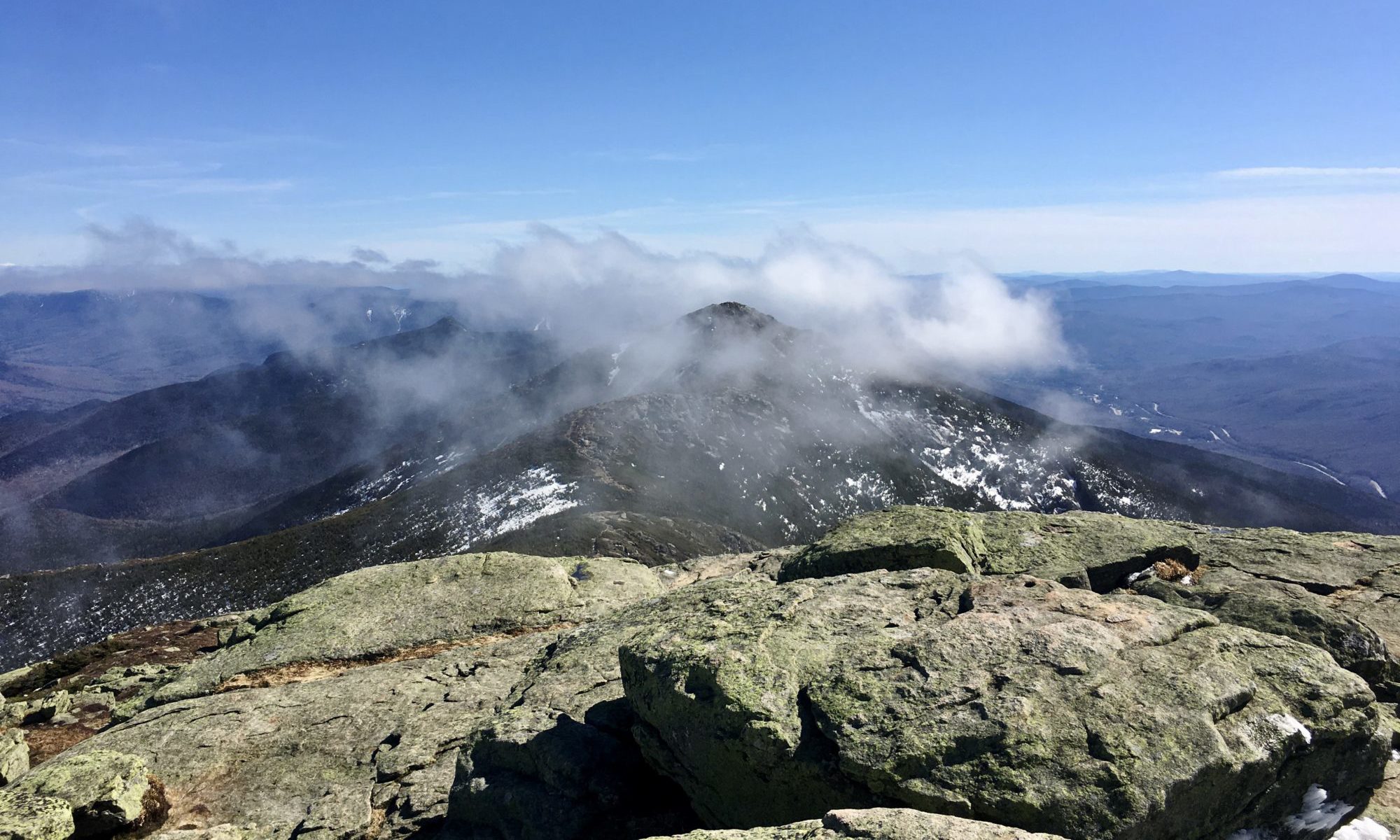Caminante, son tus huellas
el camino y nada más;
Caminante, no hay camino,
se hace camino al andar.
Al andar se hace el camino,
y al volver la vista atrás
se ve la senda que nunca
se ha de volver a pisar.
Caminante, no hay camino
sino estelas en la mar.—Antonio Machado
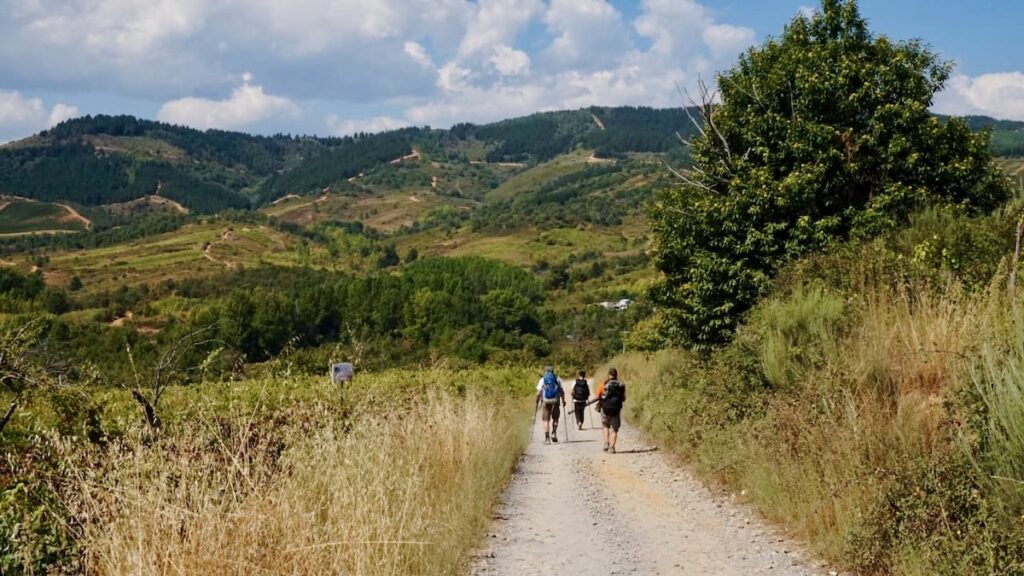
It’s been over four weeks since I returned from the 2018 World Trails Conference in Santiago de Compostela, Spain where I had the privilege of joining trails professionals and enthusiasts from over 30 countries. The various sessions, panel discussions and “task team” workshops were an incredible exchange of information and expertise. The highlight for me was the 228 km walk to the conference on the Camino de Santiago, setting the stage for what was a transforming experience.
11 of us representing Russia, Armenia, Turkey, Hungary, Korea, Puerto Rica, South Africa, Lebanon, Australia and the United States walked 25 – 30 km a day, passing though farms, forests, villages and cities. As we walked we met locals from places along the way and many fellow peregrinos (pilgrims). People have been walking the Camino since the 11th century, en route to the Cathedral of Santiago de Compostela. Nearly 300,000 people have walked the Camino so far in 2018. For many, if not most, this is a Christian pilgrimage, but it has come to be also a recreational route that inspires people of different faiths from all around the world.
For me walking is an opportunity to reflect, and I chose the Anonio Machado poem Caminante, No Hay Camino as my starting point. I’ve looked at various translations and finally settled on the following that is my own, a hybrid of what I found:
Traveler, your footprints are
the trail, and nothing more.
Traveler, there is no trail
if walking is your purpose.
You make the trail by walking,
and when you turn and look behind,
you see a trail that you will never
travel again.
Traveler, there is no trail
just a wake left in the sea.
I began my walking meditation by reflecting on the word camino. Depending on the country and context, camino can refer to a road or a trail. Camino is often translated as “the way” when referencing the Camino de Santiago. As with any pilgrimage, walking the Camino represents an inner journey realized by traveling a road or trail, and it is this inner journey that is central to its meaning: “…there is no trail if walking is your purpose. You make the trail by walking.”
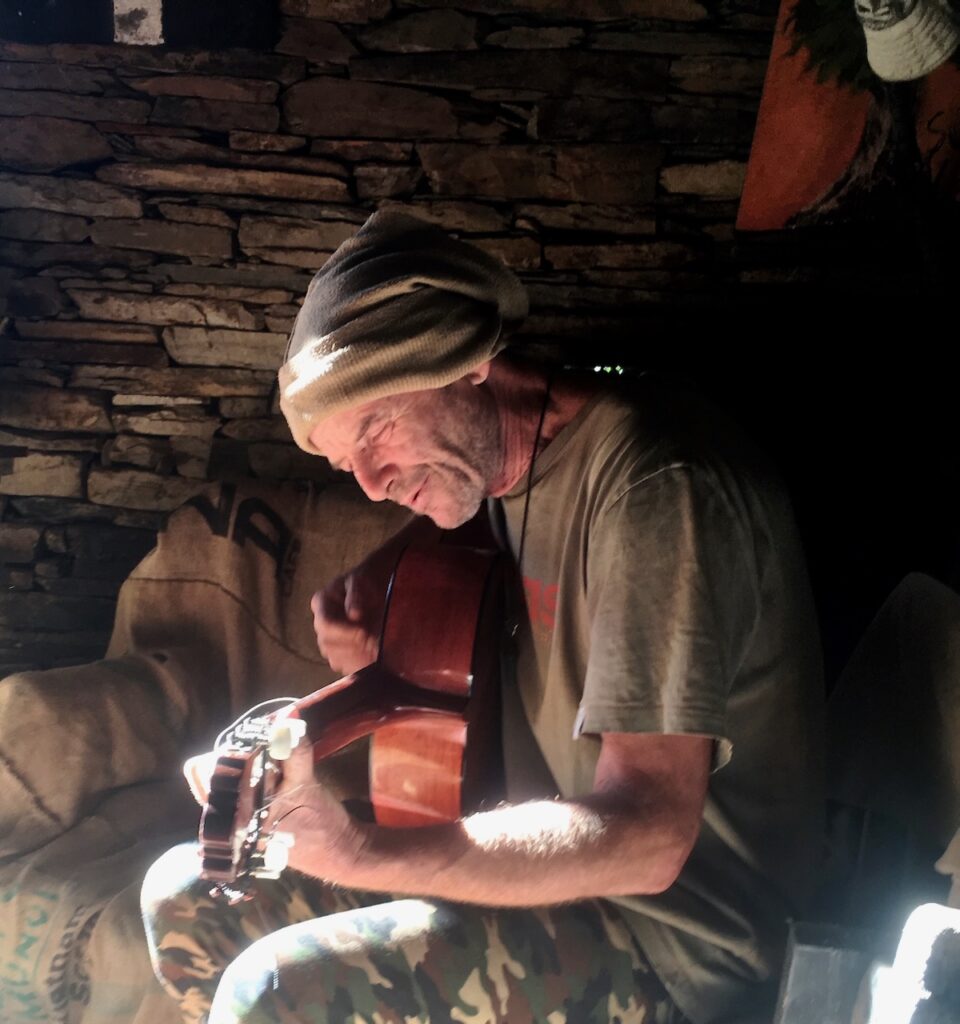
We often refer to the “path” our lives take. It is after the fact and in retrospect that we tie together disperse and sometimes chaotic events into the common thread that gives meaning to life’s journey: “…you make the trail as you go.” And, of course, this path cannot be retraced, we cannot relive the past. In the end the traces, our footprints, are impermanent: “there is no trail, just a wake left in the sea.”
I found myself considering the paradox of an actual, physical trail that stretches ahead and behind, that we follow, but that is at the same time an experience with no permanence before or after our passage: an inner journey realized in an outer landscape. What is the relationship between this inner and outer path?
As I walked the Camino the image of a thread trailing behind me arose from the words: “…and when you turn and look behind, you see a trail that you will never travel again.” In addition to seeing an imaginary line draped over the landscape, I found myself taking the time to knit the sometimes tangled and broken strands of my personal narrative into a more coherent story. This story maps the fading steps behind me and provides a dim light to see my way forward: it creates meaning from my life and for my life. As I conversed with my travel companions, I shared my story and heard their stories. These conversations were the basis for our bonding as a group.
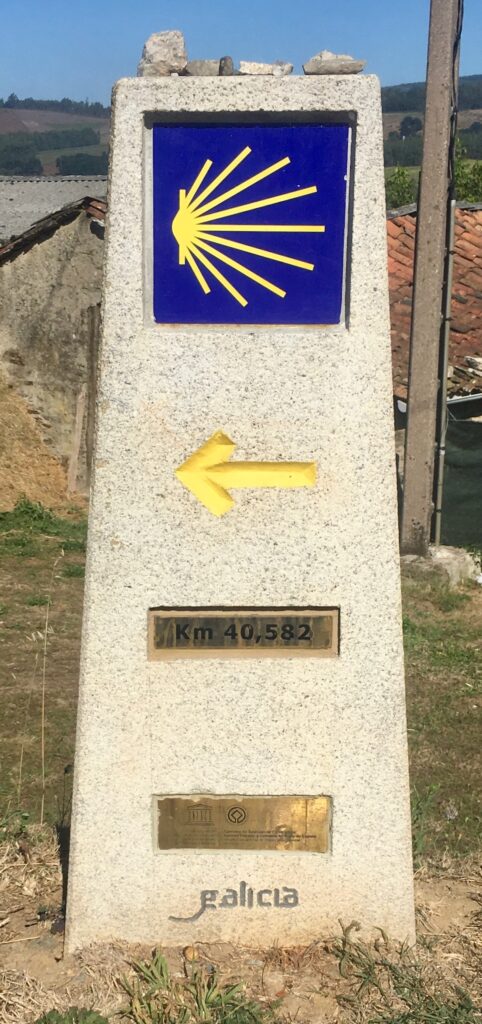
As I continued walking I saw my imaginary thread alongside others: my fellow walkers each trailed behind them their own threads, their own stories in a variety of colors and textures. And then there were the many hundreds of other peregrinos from all over the world adding to the design. These travelers were the weft, the vertical of threads of a weaving, but what of the warp, the horizontal threads that bind a tapestry and complete the pattern?
The vertical threads reflecting multiple inner and outer journeys overlay a landscape. This landscape not only includes uninhabited forests and mountains, it encompasses the places people call home. We spent nights in Ponferrada, Villafranca, La Faba, Triacastela, Sarria, Port Marín, Palas, Arzúa, Arca and passed through many other villages. We briefly touched the lives of many hundreds of people who were simply going about day to day activities in their own communities.
The essence of a physical trail is that it passes through a real geography. No matter how inner the spiritual journey, a pilgrim walks. While many of us are accustomed to trails that traverse remote areas and wilderness, a trail is a way for people, connecting places, including the places people call home. This was most evident on the Camino de Santiago as we passed from village to farmland to forest, and returned to villages and cities again. It is in these places where people make their homes that we find the weft, the horizontal threads that complete the pattern. This pattern will itself fade and unravel with time, we can’t escape entropy, but lives and cultures, ways of life, reverberate. They are melodies recalled and turned into new songs by new generations.
As I alternated between this metaphorical vision and my actual footsteps I begin to think of the purpose of this journey: to walk to Santiago de Compostela and the 2018 World Trails Conference.
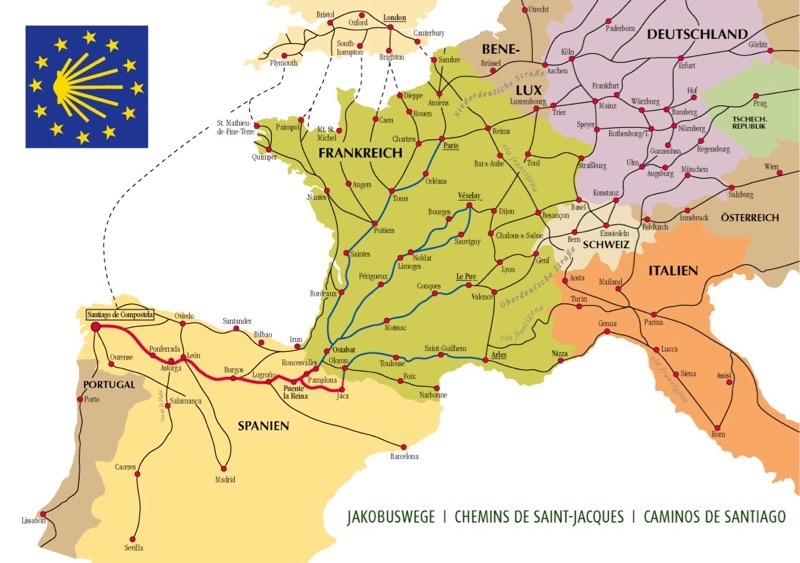
There is not just one Camino de Santiago, there are a multitude of routes passing through various European countries, and even across the water from Ireland. In this way the Camino de Santiago resembles a watershed and Santiago de Compostela is its confluence at the sea. But the Camino has come to be meaningful beyond Europe and, as I noted, it brings people of many faiths from all over the world. The 2018 World Trails Conference was an event that brought people together from all over the world for a shared experience, a focus on the multifaceted role of trails in our lives.
We often speak of watershed moments when speaking of events that mark change. A spiritual pilgrimage can result in a profound inner transformation of this kind, but even an afternoon walk can rejuvenate us, the re-creation of ourselves through recreation. The World Trails Conference is a watershed moment created every two years by the global confluence of trails professionals and enthusiasts. What were the transformative moments for me that came from my pilgrimage to the 2018 World Trails Conference?
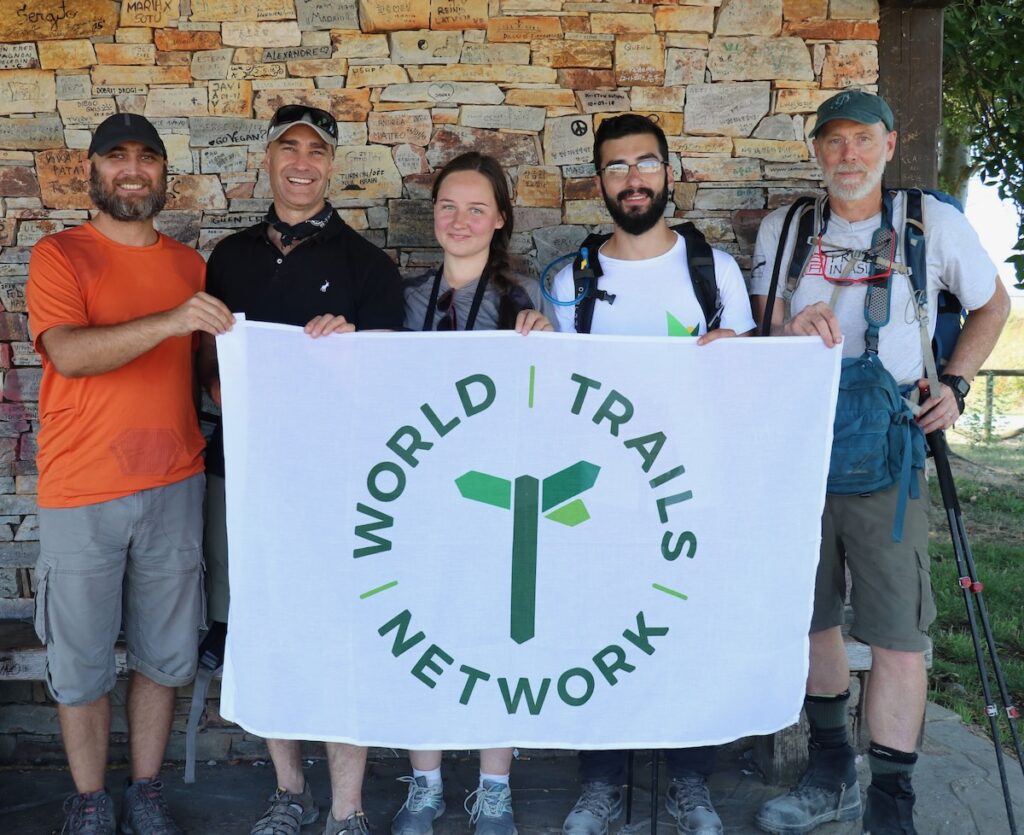
I am not able to separate my pre-conference Camino journey from the conference itself. My closeness with the companions I walked with continued throughout the conference, and the images of villages, farms and forests persisted. While I enjoyed the professional exchanges and my role in panel discussions, I return again and again to the essential truth I recognized on the Camino: trails connect people to landscapes and people to people, travel and movement is as important as the stewardship of home and place.
I say this with some hesitation. Travel can have a heavy carbon footprint. We live in a time where we must fundamentally change the way we live in order to reduce the impact of climate change. International travel is a significant contributor to climate change. Perhaps we need to pause before deciding to take that trip overseas and first look closer to home for our recreation. One of the new WTN task teams is “Towns, Cities and Trails.” We need more urban and town trails so we can both recreate at home and walk and bike within our communities.
Even so, just as there is something in us that binds us to place, there is something that compels us to travel. As a species we have always been on the move, spreading from Africa to Europe, Asia and the Americas. Trails have been with us from the beginning. I believe we need to nurture both these seemingly contrary impulses to stay in place and move about the world. Our attachment to home prompts us to care for our places, to be good stewards; travel restores us and helps us to experience our shared humanity.
There are dark sides to these opposite impulses too. If we never leave home and feel threatened by visitors, we can be prompted to build walls, closing ourselves off from the rest of the world and vilifying the “other.” We cannot forget that human movement has also come in the form of invasion and genocide. Migration is often forced by poverty, environmental destruction and war. A tapestry can record these horrors as well.
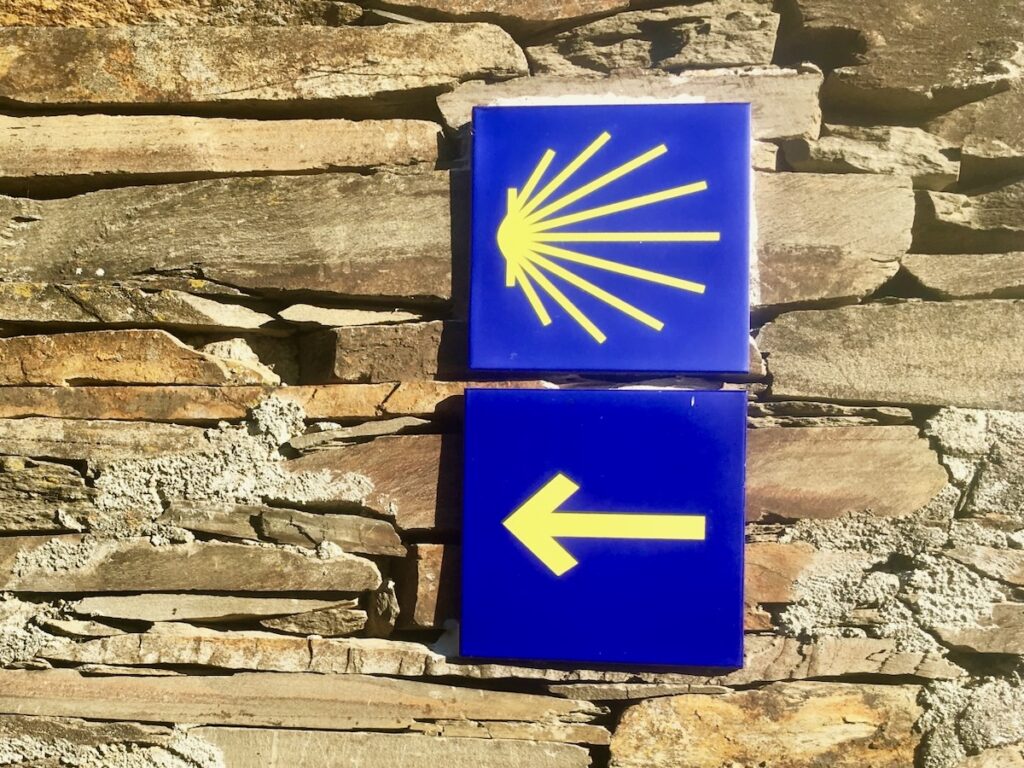
I return to my Camino journey. Even in our small group we represented nations and cultures that have historically experienced conflict and discord. By sharing a walk over nine days we were able to build a community that transcended cultural caricature and we formed strong friendships.
I have spent my life working in the field of international study and travel, and this experience of emergent community within a travel group is universal. The destinations we travel to, places people call home, can also experience expanded community as people pass through. Tourism contributes to local economies, and when well-planned, can distribute income equitably. WTN-Americas volunteer and travel programs in Costa Rica are examples of the power of this cultural exchange and economic benefit.
How to harness the power of trails so that we can together promote cultural diversity, biodiversity and economic well-being rather than move towards a future of war, environmental degradation and poverty?
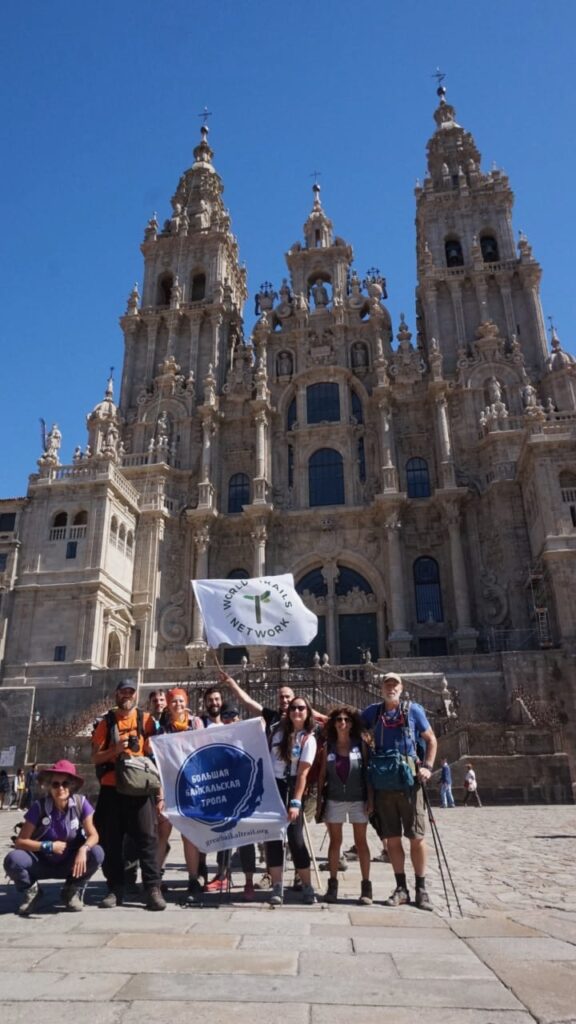
The World Trails Conference is the biannual confluence of trails professionals and enthusiasts that do the nuts and bolts work of coordinating what it takes to further this vision. The eight World Trails Network international task teams maintain progress and momentum between conferences. Through Friendship Trails, Next Generation Expeditions and travel programs organized by the WTN hubs, we provide opportunities for responsible travel, bringing in the larger trails community. In this way the World Trails Network helps to weave a continuously unfolding tapestry of trails, a chronicle of our shared quest for a sustainable future.
Two last takeaways from the 2018 World Trails Conference.
It is not enough to briefly reference climate change and the role that travel plays in increasing atmospheric carbon. Trails themselves are affected: a number of presentations identified the impact of climate change on trails and the importance of planning climate resilient trail systems. This was made very evident when the Sendero Pacífico in Costa Rica was severely affected by Hurricane Nate—we expect more storms of this magnitude in Costa Rica in the future. Climate change is an existential threat and we must consider how travel and trails can promote solutions. With this in mind I’d like to give a shout-out to Corclima, an initiative bringing people and organizations together in Monteverde, Costa Rica to make this major tourist destination climate resilient and carbon negative.
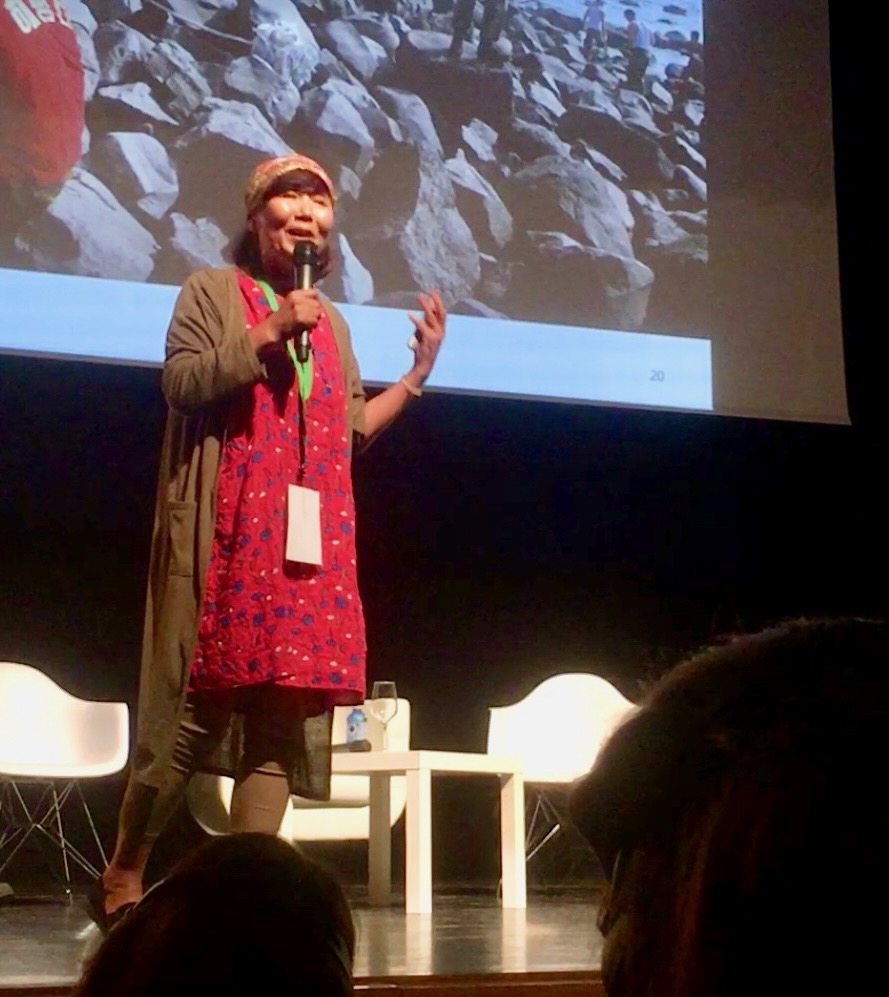
Events in recent weeks and months, events in the last few days, underscore the danger that hatred, xenophobia and nationalism pose to a sustainable future. If trails can build community across cultural and geographic divides, they can be a force for peace. One of the most inspiring moments at the 2018 World Trails Conference was when Suh Myung Sook, Honorary Patron of the World Trails Network, recalled her parents walking on a trail between their two villages in Korea. These villages are now separated by the Demilitarized Zone (DMZ). She then shared her vision of an International Peace Trail linking North and South Korea. In recognition of the idea that trails can be paths for peace, the World Trails Network has established a new International Peace Trail initiative.
